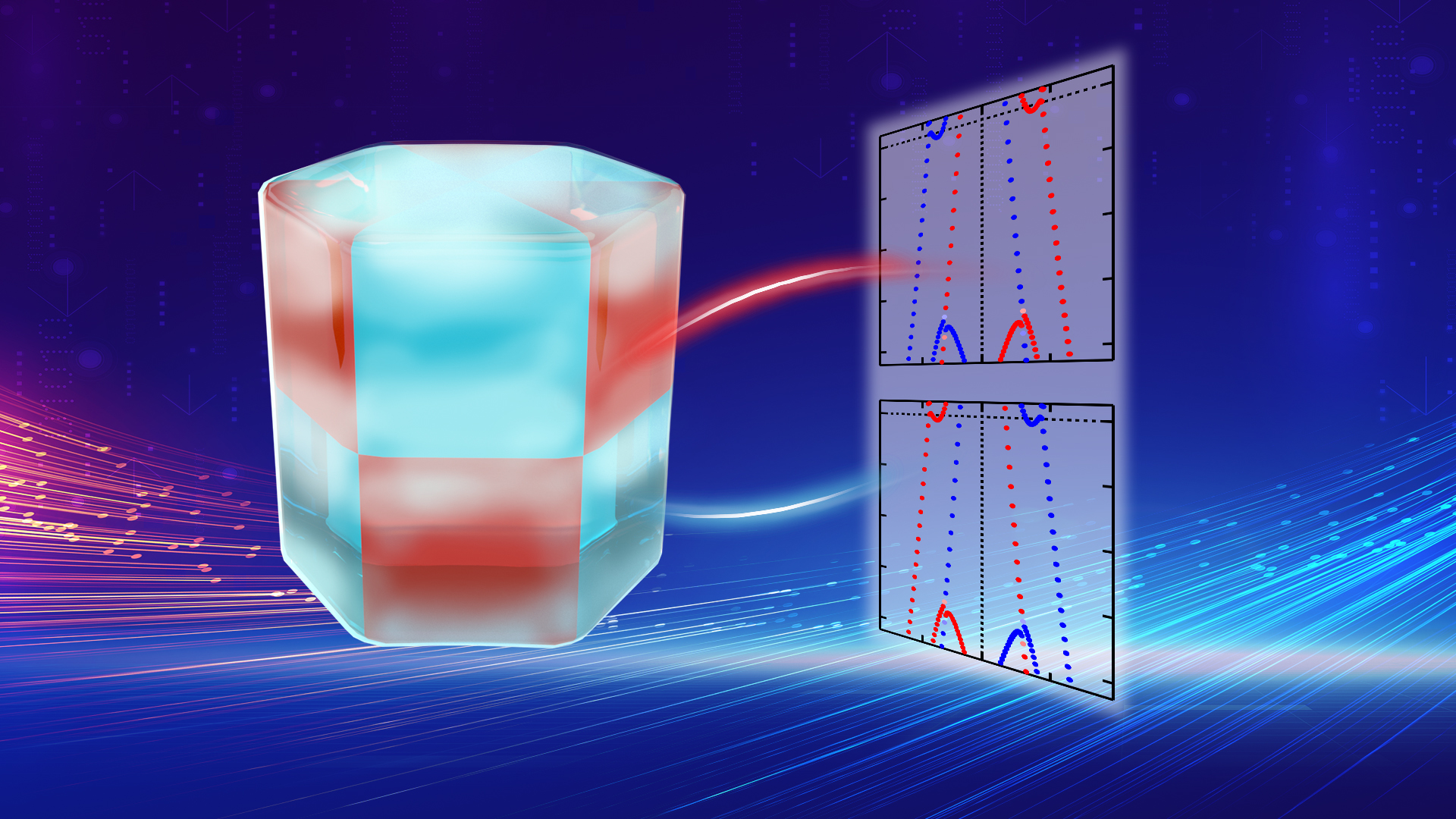Unconventional antiferromagnets that enable the spin-splitting (SS) of electronic states have been theoretically proposed and experimentally realized, showcasing novel spin group symmetries that connect magnetic sublattices containing oppositely aligned moments. These material categories expand the choice of materials in the field of antiferromagnetic spintronics, subsequently holding potential for high-efficiency spintronic devices that are functional at room temperature.

Associate Professor Chang Liu’s research team from the Department of Physics and the Shenzhen Institute for Quantum Science and Engineering (SIQSE) at the Southern University of Science and Technology (SUSTech) has recently tackled the challenge of detecting giant band splitting structures in CrSb. Using high-resolution Angle-resolved Photoemission Spectroscopy (ARPES) techniques, the team unveiled spin-split mechanisms unique to this unconventional antiferromagnet.
Their paper, titled “Observation of Spin Splitting in Room-Temperature Metallic Antiferromagnet CrSb”, has been published in Advanced Science, an internationally renowned journal of material science.
CrSb is an unconventional antiferromagnet whose unique symmetry can only be described by a spin group. Its band structure exhibits significant momentum-dependent SS, fundamentally different from the traditional relativistic Rashba and Dresselhaus effects. In this work, Chang Liu’s team synthesized high-quality CrSb single-crystal samples with (001) and (100) planes, and used high-resolution ARPES to confirm a new SS mechanism defined by the spin group.
To explore the out-of-plane anisotropy of the SS, the researchers conducted ARPES measurements at different kz values (Figure 1). As kz varied, the band gradually split from a degenerate state at high-symmetry points into two bands, eventually returning to a degenerate state at another high-symmetry point, aligning with the symmetry described by the spin group element [C2||Mz].

Figure 1. Evolution of the SS at different out-of-plane momentum positions. a) 3D BZ of CrSb with a 2D cross-section showing the ΓMLA plane; b) ARPES kz–kx CECs at binding energies EB = 0.6 eV; c) From top to bottom: ARPES band dispersion parallel to Γ̅-M̅ with an equal kz offset of 0.25 𝜋/c between each; corresponding second derivative analysis along the energy distribution curves (EDCs); Density Functional Theory (DFT)-calculated bulk bands; momentum distribution curves (MDCs) with peak fitting results.
To verify the in-plane anisotropy of the SS, the team performed constant energy surface scans at specific kz values and measured band dispersions along different momentum directions. As shown in Figure 2, the bands split along the Γ̅-M̅ but remained degenerate along the Γ̅-K̅. These experimental results are consistent with the symmetry described by the spin group element [C2||C6zt].
This research marks the first observed instance of strong SS phenomenon in the unconventional room-temperature metallic antiferromagnetic material CrSb, with its splitting strength exceeding that of conventional materials. This breakthrough not only reveals the unique SS mechanism of CrSb, but also indicates its potential as an ideal material for next-generation spintronic memory devices.
These unconventional SS antiferromagnets’ application and strategic significance in information storage are particularly prominent, especially in next-generation magnetic resistance random memory. Compared to traditional ferromagnetic materials, these materials are expected to greatly enhance information storage efficiency, field resistance, and integration density. This study provides critical experimental evidence and innovative ideas for further developing magnetic storage technology.

Figure 2. Evolution of the SS at different in-plane directions. a) 3D BZ of CrSb with a 2D cross-section showing the OBC plane; b) ARPES CECs at EB = 0, 0.2, and 0.4 eV with incident hv = 106 eV, and DFT calculated results; c) From top to bottom: ARPES band dispersion along cuts 1–5; corresponding second derivative analysis along the EDCs; DFT-calculated bulk bands; MDCs with peak fitting results.
Ph.D. students Meng Zeng, Mingyuan Zhu, and Yupeng Zhu from the Department of Physics at SUSTech are the first authors of this paper. Associate Professor Chang Liu is the corresponding author, and SUSTech is the first affiliated institution.
Additional co-authors from SUSTech include Professor Qihang Liu and Ph.D. students Xiangrui Liu, Yujie Hao, Pengfei Liu, and Tianhao Shao, along with master’s student Yue Dai and Research Assistant Professor Xiaoming Ma from SIQSE. Other collaborators include Ph.D. student Gexing Qu from the Institute of Physics at the Chinese Academy of Sciences; Dr.Yichen Yang from the Shanghai Institute of Microsystem and Information Technology, Chinese Academy of Sciences; Dr. Zhicheng Jiang from the University of Science and Technology of China; Dr. Kohei Yamagami from the Japan Synchrotron Radiation Research Institute (JASRI); Engineer Masashi Arita and Professor Kenya Shimada from Hiroshima Synchrotron Radiation Centre at Hiroshima University; Associate Professor Xiaoqian Zhang from Southeast University; and Professor Yaobo Huang and Associate Professors Mao Ye and Zhengtai Liu from the Shanghai Synchrotron Radiation Facility.
Paper link: https://onlinelibrary.wiley.com/doi/epdf/10.1002/advs.202406529
To read all stories about SUSTech science, subscribe to the monthly SUSTech Newsletter.
Proofread ByAdrian Cremin, Yingying XIA
Photo ByDepartment of Physics